Museum of Ice Cream took over your Instagram feed – now it wants to take over your life
It looks like rainbows, smells like sugar and feels like money
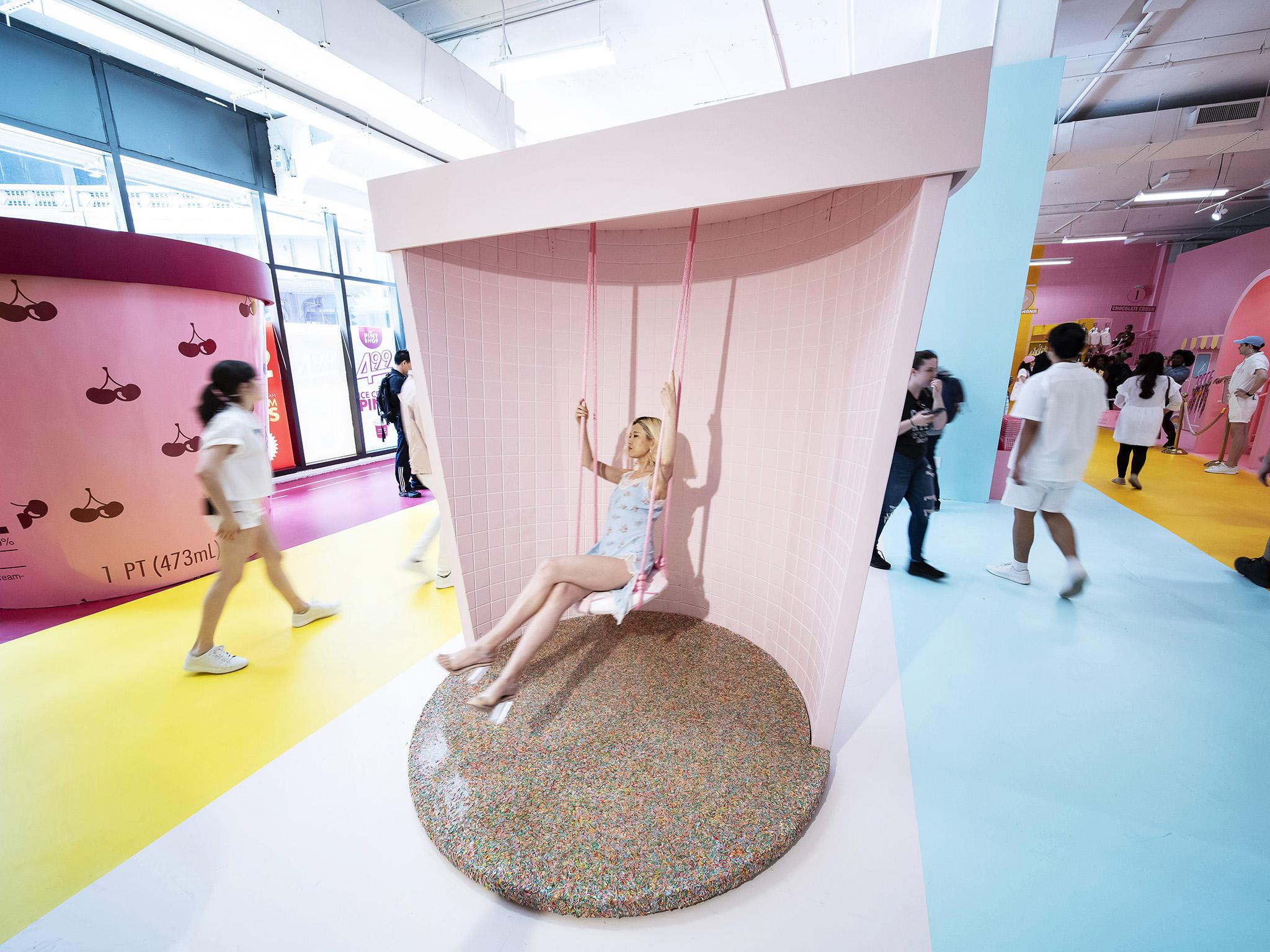
Your support helps us to tell the story
From reproductive rights to climate change to Big Tech, The Independent is on the ground when the story is developing. Whether it's investigating the financials of Elon Musk's pro-Trump PAC or producing our latest documentary, 'The A Word', which shines a light on the American women fighting for reproductive rights, we know how important it is to parse out the facts from the messaging.
At such a critical moment in US history, we need reporters on the ground. Your donation allows us to keep sending journalists to speak to both sides of the story.
The Independent is trusted by Americans across the entire political spectrum. And unlike many other quality news outlets, we choose not to lock Americans out of our reporting and analysis with paywalls. We believe quality journalism should be available to everyone, paid for by those who can afford it.
Your support makes all the difference.“My name is Maraschino Marcus, and I’m going to be one of your flavour experts today!” said a tall and chipper man dressed in a pink lab coat and standing in an all pink room. He was about to tell a group of women about “our megastar flavour” vanilla, an ingredient he said was “essential to almost all of the flavours that we know and love”.
It was a lively welcome to the Pint Shop, a spin-off of the hugely Instagram-popular Museum of Ice Cream (MOIC) which immerses visitors in a world of photo ops with rainbow sprinkles and Gummy bears. Now in San Francisco, the museum got its start in New York. In June it returned as a spin-off, selling the museum’s new line of ice creams.
The museum started as a photo-heavy attraction and the Pint Shop marked a greater transition: The Museum of Ice Cream is no longer just a place, it’s a lifestyle brand. And that’s just the beginning of founder Maryellis Bunn’s grander ambitions.
Maraschino Marcus, joined by his peppy female companion Nilla Bean, told the group they needed ice cream names – Bunn’s was “Scream”. The group’s members gave themselves names such as Mocha and Salted Caramel. No one chose Carageenan, an emulsifier often found in ice cream, or Soy Lecithin. The Pint Shop was no place for snark.
Rather, it was designed to give guests “a very tiny snapshot into the experience that I and my team had, actually developing an ice cream line,” said Bunn, 26. “What does this flavour look like? What does it feel like? What does it smell like? And how does it feel to be inside of that flavour?”
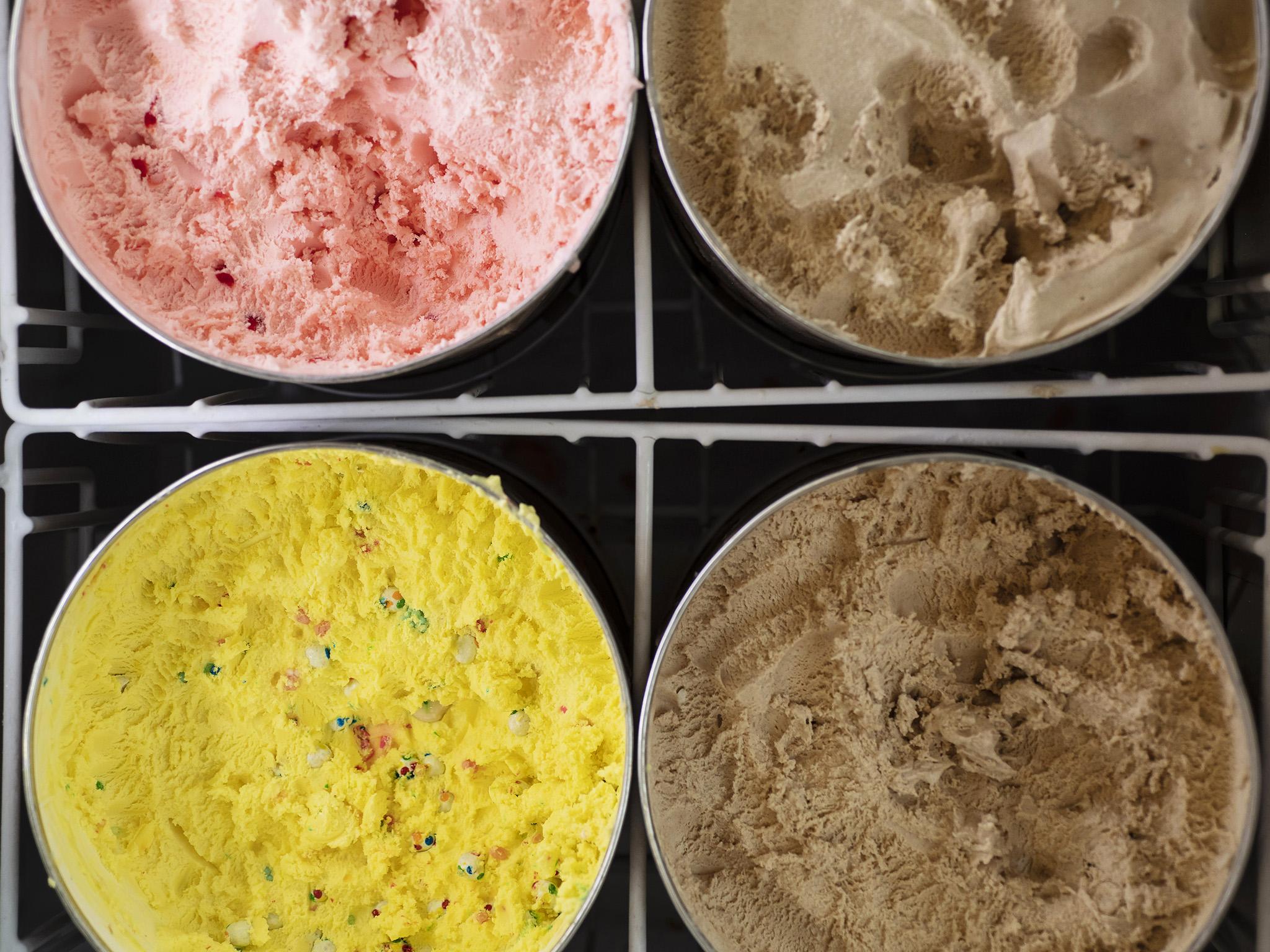
It looks like rainbows, smells like sugar and feels like money. According to MarketWatch, the Museum of Ice Cream has made more than $20 million since its opening in 2016. Tickets to the San Francisco museum sell for $38 apiece, but the Pint Shop, a pop-up that closed on August 19, was free.
It found a corporate sponsor, Target, where the ice creams are also sold, and the store looked like a colourful riff on a big box rival: monochromatic aisles of merch in the museum’s signature pastels, a freezer aisle full of branded ice cream, three shed-sized pints decorated as backdrops for social media snapshots. And, in the back, the pink room for the tasting experience, which cost $33 and included a pint.
It was all designed to look great in photos. Visitors could jump in the Cherrylicious pint and make GIFs of themselves swimming through a pool of plastic cherries. They could pose in pink in front of the aisle of pink sprinkle toys and accessories. “I actually brought three dresses,” said Saina Kam, a luxury fashion marketer, wearing a blue slip dress that perfectly matched the branded colour of the Churro Churro flavour – which encompassed an entire aisle of the shop. “We’re going to have an outfit change later.”
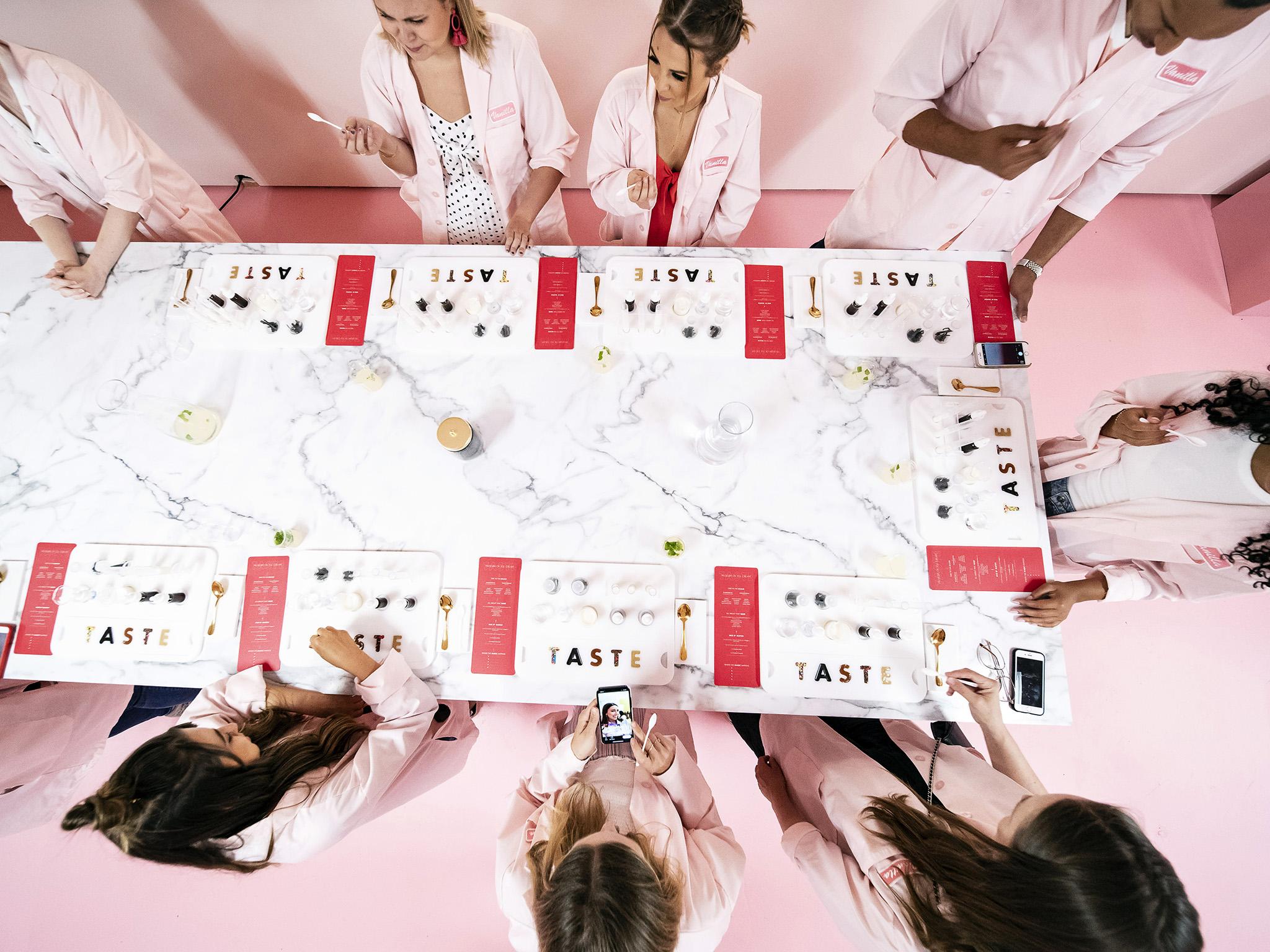
Bunn has said in previous interviews her goal is to be the next Walt Disney. But she actually wants to build a city.
“We need spaces that ... catapult our human behaviour interaction in a way that we haven’t seen before,” she says. “We’ve become dormant in our curiosity and creativity. So if I can build spaces – cities, right – that really reinvigorate that, so it’s not just this check-in, go to work, go home...”
She deflects questions on what that city would look like or how it would function. But every space – the hospitals, stores, parks – would be designed to foster creativity and connection. Would it be a utopia? Or – consider the image of a charismatic leader surrounded by pink-clothed employees, as in recent Netflix documentary series Wild Wild Country – would it be a cult?
“Utopia has this connotation” that is easily misconstrued, she said. “I think about it more in the sense of like, how do we build the spaces that are going to change the way in which humans think about culture?”
Either way: In her future city, the grocery stores would not look like the Pint Shop.
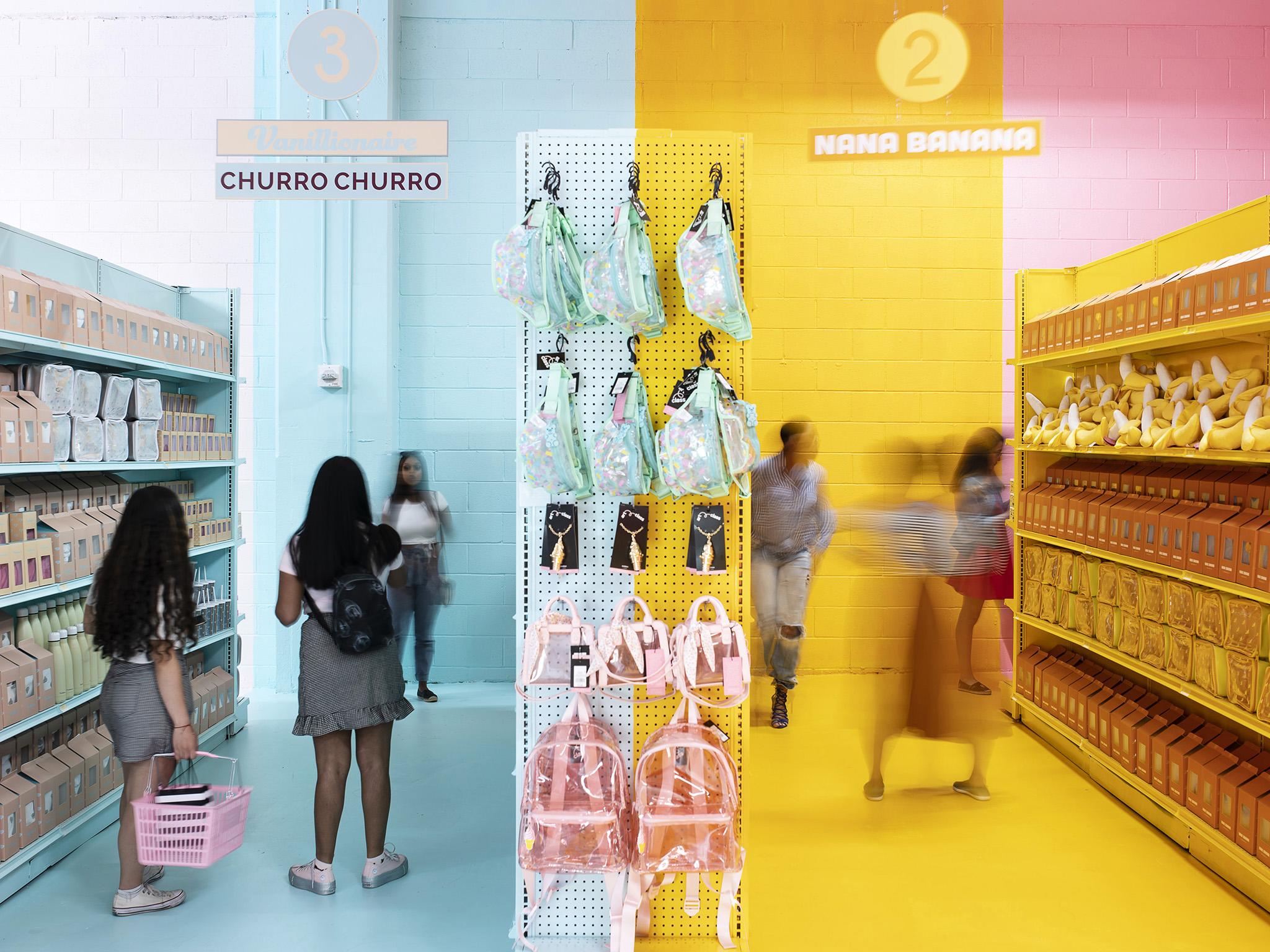
“It’s not a grocery store,” she said. It’s a space that “spoke to our brand mission of inclusivity”.
Art critic Ben Davis has said Bunn and her imitators – including San Francisco’s Color Factory and serious art museums that host room sized installations such as the National Building Museum’s Fun House – are part of a movement called “Big Fun Art.” “Branded experiences ... compete with retail spaces looking to refashion themselves as ‘experiences’ to get some advantage over online shopping,” Davis wrote. “These in turn compete with the various new para-art pop-ups that now go head to head with museums for the adult theme park dollar.”
While Bunn is not sure she started an art movement, she knows she is an artist. “My art is human experience,” she said. And human experience is the art other people make in her spaces: “Before they go, they’re curating a group of friends they want to go with,” she said. “They curate their own outfits because they want their outfits to be part of it, so that’s where the creative process starts to flow.”
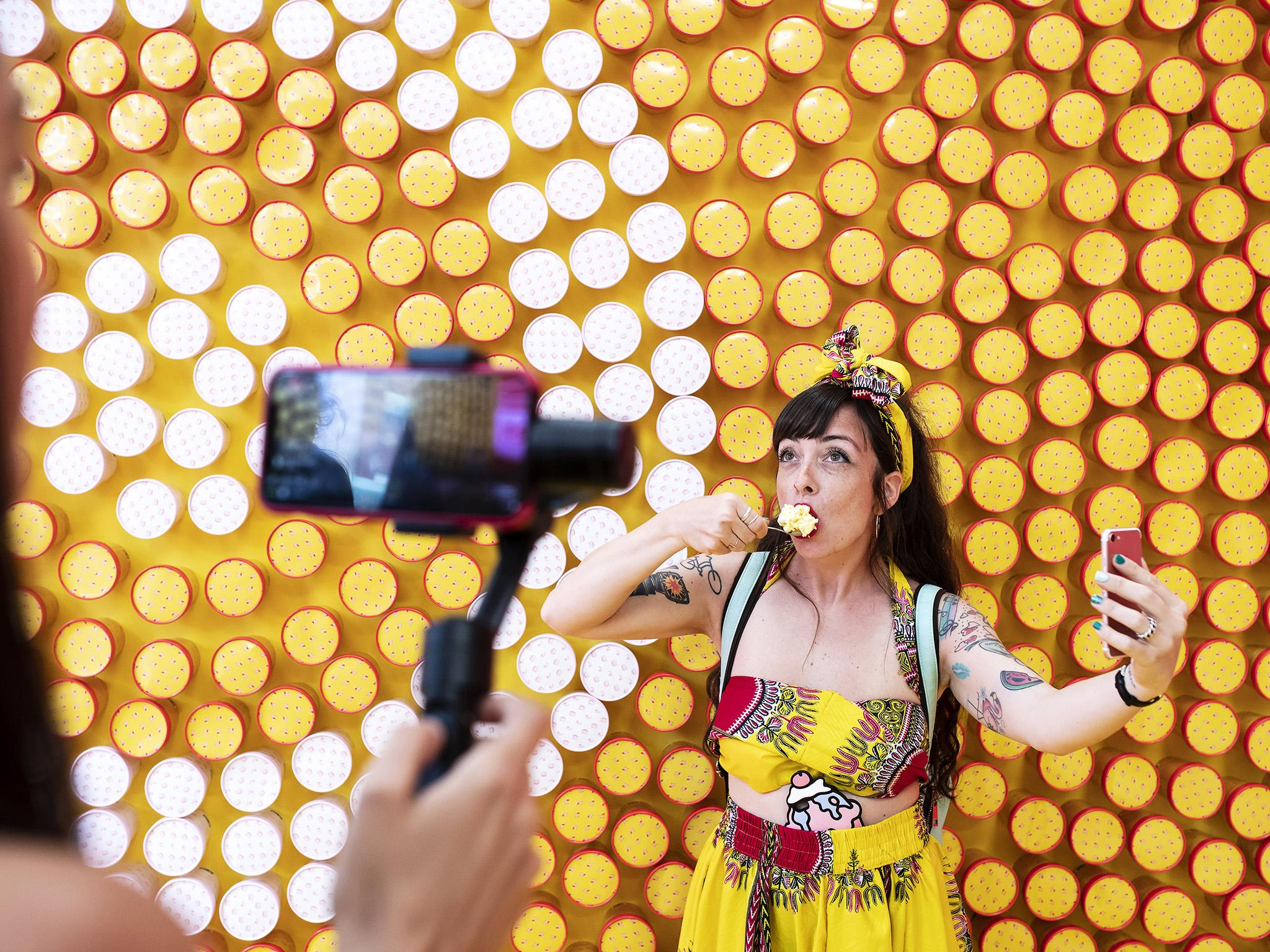
Millennials don’t want things – they want experiences. That’s the line marketers and trendspotters have been trumpeting for years. Things are almost shameful, something we’ve organised out of our lives. Experiences are pure. But a photo of yourself experiencing something – even if it only exists as pixels on your phone – is a thing, a thing people want. And it’s a thing they’ll pay extravagantly for.
People who visited the Pint Shop weren’t just there to buy ice cream. They were there to take photos, hundreds of them, “curated,” as Bunn says, with outfits and poses and objects, to become social media status symbols. Bunn has wavered about the idea publicly, sometimes encouraging people to put away their phones.
“We’re in the process of a new MOIC project I’m building. There will be spaces which will be phoneless,” Bunn said. “I think we’ll get some backlash, but once they allow themselves to let go, it will be powerful.”
But selfies, as much as ice cream, are what she’s selling.
The children’s clothing line she launched in another partnership with Target – Art Class – matches the exhibitions exactly: For the perfect photo op, you can put your child in a banana print shirt on a swing in front of a backdrop of bananas. People used Pint Shop merchandise as props, often without buying. But that was okay, because their photos served as advertisements for $14 water bottles that look like milkshakes, or $22 sprinkle-print yoga mats.
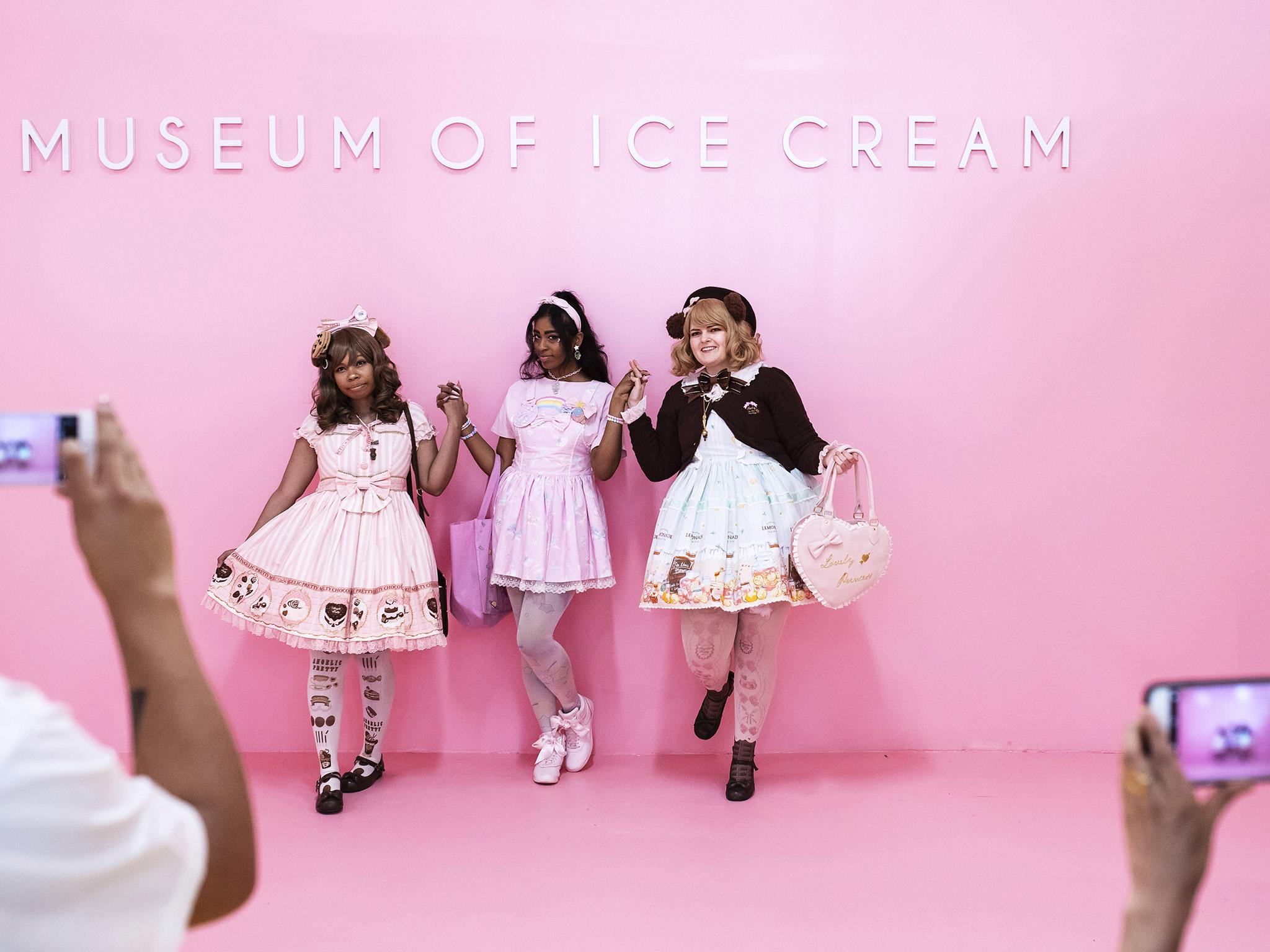
Experiences are commodities, and that’s been the undercurrent of social media focused museums since they began. The Pint Shop just made the implicit overt. The experience is a store. But all of these experiences were stores all along.
Back at the tasting room, everyone was told to grab a millennial-pink lab coat.
“Uh, I’m okay,” said a chic looking girl wearing all black. Her outfit was a look, and a pink lab coat was not her aesthetic. Maraschino Marcus told her the lab coats were not optional. “It can get a little messy” was his reasoning, but one suspects it was because photos look better when everyone in the pink room is wearing pink.
We were invited to crowd around an assortment of beakers full of marshmallowy cotton balls and waft their scents toward our noses, high school chemistry lab style, before experimenting with test tubes and eye droppers of vanilla extract and cream, to create an ice cream base.
“We went through 7,000 variations to come up with ice cream bases that you’re going to taste today,” Maraschino Marcus said. “Over the last year: 7,000!”
Finally, the ice cream arrived. More lab coated assistants dispensed scoops of six flavours – with names like Vanillionaire, Nana Banana and Chocolate Crush – into a custom dish. The scoops were the size of a ping-pong ball: Two bites and they’re gone. The ice cream was good, but not remarkably better than any other brand of premium grocery store ice cream, such as Haagen Dazs.
The photos, however, were incredible.
© Washington Post
Join our commenting forum
Join thought-provoking conversations, follow other Independent readers and see their replies
Comments